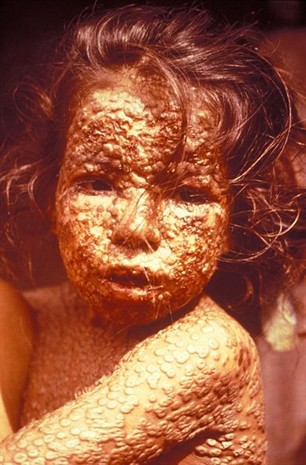
Small pox travelled up the river from St. Louis on blankets aboard the steamboat St. Ange
The small pox
plague of 1837 was devastating (and decimating) to the plains
Indians. They had no natural immunity to this disease and no
effective way of treating it. The white men knew about
vaccination but were unable to inoculate their own people, let
along the Indians. (click here for more on small pox and the
Indians)

The 1837 plague
struck with devastating speed and violence. Its victims
experienced excruciating pain in the head and back and then died
within a few hours. Bodies turned black and swelled to three times
their normal size. Nearly everyone who contracted the disease died.
http://www.fordham.edu/halsall/mod/smallpox1.html In the
Mandan, Hidatsa and Arikara villages, hundreds perished every day.
With so many deaths among so few survivors, burials were
impossible. Corpses were heaved over the cliffs into the
river.
The epidemic
raged through the summer and into the fall. The Hidatsa and
Arikara, out on the plains hunting, managed to escape the worst of
it by scattering into the country. The Mandans, hemmed in by Sioux
war parties, were penned into their villages where the disease made
them easy prey.
click here for more
The artist
George Catlin described their plight: "The Mandans were surrounded
by several powerful enemies. Had they been able to disperse onto
the Plains many might have survived, but they were imprisoned
within their villages where the disease went through them without
prejudice. Nearly half destroyed themselves with their
knives, guns, and by dashing their brains out by leaping head first
from a thirty-foot ledge of rocks in front of their village. The
bodies were left in horrid piles in their own earth lodges, left
there to decay under buffalo robes and devoured by their own
dogs."
The Arikara and
Hidatsa populations were cut in half, but the Mandan fell from 1800
people in June to fewer than 100 by the end of the year.
(click here for more)
There are few examples in
human history of any people being so completely devastated by a
disease in such a short period of time.
Related People
Related Events